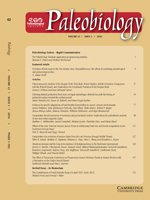Thalattosuchians are crocodylomorphs mainly known from marine strata of Early Jurassic to Early Cretaceous age. They represent the earliest crocodylomorph radiation to an aquatic habitat and their evolutionary history offers very few records from freshwater settings. Here, we report several exquisitely preserved thalattosuchian skulls attributed to a derived teleosaurid from a pedogenic horizon located at the base of a fluvial series of alternating silts and sandstones of the Phu Kradung Formation (Upper Jurassic) of northeastern Thailand. Using laser ablation multicollector inductively coupled mass spectrometry (MC-ICP-MS) on tooth enamel and dentine, we measured isotopic ratios of strontium (87Sr/86Sr) to test the habitat of these teleosaurids. In addition, Sr concentrations of the dental tissues were estimated from the calibrated signal intensities of the Sr isotope measurements. The dataset includes bioapatite (teeth or scales) of eight terrestrial and five aquatic vertebrates. Theropods exhibit lower Sr concentrations both in enamel and dentine compared to others groups, a pattern in accordance with the calcium biopurification process, which predicts that Sr concentrations in the body of vertebrates decrease up the trophic chain. It also excludes the possibility that diagenesis has completely overprinted the Sr isotope compositions of the fossil assemblage, which exhibits a homogeneous 87Sr/86Sr signature above the Late Jurassic seawater value. Values for teleosaurid teeth are in the range of other values for vertebrates in the continental assemblage and imply that these crocodylomorphs did not migrate between freshwater and marine habitats at least in the time constraint of the mineralizing tooth. This result represents the first demonstration that a population of teleosaurids was established for a prolonged time in a freshwater environment.Whether the ability of teleosaurids to inhabit freshwater habitats is a secondary adaptation or whether it is plesiomorphic and inherited from freshwater ancestors is discussed.
How to translate text using browser tools
23 December 2015
Strontium isotopes and the long-term residency of thalattosuchians in the freshwater environment
Jeremy E. Martin,
Uthumporn Deesri,
Romain Liard,
Athiwat Wattanapituksakul,
Suravech Suteethorn,
Komsorn Lauprasert,
Haiyan Tong,
Eric Buffetaut,
Varavudh Suteethorn,
Guillaume Suan,
Philippe Telouk,
Vincent Balter
ACCESS THE FULL ARTICLE

Paleobiology
Vol. 42 • No. 1
Winter 2016
Vol. 42 • No. 1
Winter 2016





